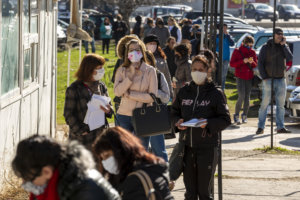After the 1980s, advanced capitalist economies witnessed a significant decline of the labor share in income. Along with the conventional view, which ascribed this decline to technological factors and international trade, another line of enquiry has endorsed a ‘Political Economy’ approach to identifying several drivers of the labor share erosion. Among the latter, the role of persistent labor market slack has remained relatively unexplored. We try to fill this gap moving from a recent contribution by Anwar Shaikh, who elaborated on the relation between unemployment and changes in income distribution and in the US economy. We study this relationship by adopting a long-term approach, using two alternative measures of labor market slack (namely, the unemployment rate and the unemployment intensity, an index that incorporates the duration of unemployment). We first extend Shaikh’s method of analysis to eight mature countries, and subsequently we approach the relationship between changes in labor market slack and the (adjusted) wage share in the private sector of the economy from 1960 to 2017 with other econometric techniques. Our findings confirm the existence of a negative relationship between labor market slack and the wage share, and we find no tendency to return to a ‘normal’ unemployment rate associated with a stable wage share.
Working Paper
Unemployment and Income Distribution: Some Extensions of Shaikh’s Analysis
Working Paper Series By
Working Paper Series By
Download- Wp 137 Stirati (pdf, 1.65 MB)
- E1 General Aggregative Models
- E11 General aggregative models – Marxian • Sraffian • Kaleckian
- E2 Consumption, Saving, Production, Investment, Labor Markets, and Informal Economy
- E25 Aggregate Factor Income Distribution
- J6 Mobility, Unemployment, Vacancies, and Immigrant Workers
- J64 Unemployment: Models, Duration, Incidence, and Job Search



